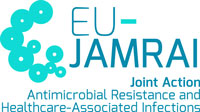Step by step guide for the implementation and assessment of Peer-to-peer Learning
Peer-to-peer (P2P) learning is a broad educational approach where individuals with similar status, experience levels, or roles actively learn with and from each other as equals, rather than from a designated hierarchical expert or instructor. It encompasses a range of collaborative activities such as peer teaching (where peers instruct each other), peer-assisted learning (PAL – where learners help each other understand concepts or skills), peer coaching, study groups, and Peer Observation (where peers observe each other’s practice to provide feedback and learn vicariously). P2P learning is grounded in social constructivist theories, emphasizing active knowledge co-construction, shared understanding, and mutual support within a safe and often more relaxed learning environment. In the context of AMR/AMS, P2P learning can facilitate the sharing of practical knowledge, problem-solving strategies, guideline interpretation, and best practices among various healthcare professionals, researchers, or educators.

Planning a Peer-to-peer Learning
The following steps should be taken into consideration when planning a Peer Observation or a Peer-to-peer Learning on AMR/AMS:
- Define Clear Learning Objectives and Scope for AMR/AMS P2P Learning: Identify specific AMR/AMS topics, skills (e.g., applying a new prescribing guideline, performing an IPC technique, interpreting an antibiogram, communicating AMR risks), or problem-solving challenges that are well-suited for peer exchange and collaborative learning.
- Select Appropriate P2P Model and Structure: Choose a P2P model that aligns with the objectives and target audience. This could include:
- Peer Teaching/Tutoring: More experienced peers (or those who have mastered a specific AMR/AMS concept) teach or tutor less experienced peers.
- Peer-Assisted Learning (PAL)/Study Groups: Small groups of peers work together to understand complex AMR/AMS material, solve problems, or prepare for assessments.
- Peer Coaching: Peers provide each other with support, feedback, and encouragement to achieve specific AMR/AMS practice goals.
- Peer Observation and Feedback: Peers observe each other performing a task (e.g., a clinical interaction related to antibiotic prescribing, an educational session on AMR, an IPC procedure) and provide structured, constructive feedback.
- Technology-Enhanced Peer Learning: Utilize online platforms for virtual P2P discussions, collaborative projects, or peer assessment of submitted work.
- Participant Pairing or Grouping: Carefully pair or group participants. This can be based on similar roles, mixed experience levels (for peer tutoring), shared learning goals, or random assignment for diverse perspectives. Ensure groups are small enough to facilitate active participation.
- Provide Training and Clear Guidelines (for Peer Tutors/Observers/Facilitators): If some peers take on teaching, coaching, or observation roles, provide them with adequate training on how to facilitate learning, provide effective feedback, and manage group dynamics. Clearly outline roles, responsibilities, ground rules for respectful interaction, and any specific protocols for the P2P activity (e.g., observation checklists, feedback frameworks). (Markowski et al., 2021, note the importance of adequate preparation for peer learners).
- Resource Provision: Make relevant AMR/AMS learning materials, guidelines, case studies, or problem sets available to support the P2P interactions.
- Facilitation: While P2P learning emphasizes learner autonomy, a facilitator may be needed to set up the structure, provide initial guidance, monitor progress, troubleshoot issues, and potentially guide reflective debriefing sessions to synthesize learning. The level of facilitation can vary.
- Foster a Supportive and Safe Learning Environment: Crucially, create an atmosphere of trust, mutual respect, and psychological safety where peers feel comfortable asking questions, admitting uncertainties, sharing challenges related to AMR/AMS, and giving/receiving constructive feedback without fear of judgment.

Defining roles in a Peer-to-peer Learning
Facilitator’s role (Educator/Program Coordinator): Design and structure the P2P learning experience. Select and prepare appropriate AMR/AMS learning tasks or topics. Train peer tutors/facilitators/observers if applicable. Provide necessary resources and clear guidelines. Create a supportive learning climate. Monitor group dynamics and provide support when needed. Guide overall reflection and help synthesize collective learnings.
Participant’s role (Peer Learner/Peer Teacher/Peer Observer): Actively engage in the learning process by sharing their own AMR/AMS knowledge, experiences, and perspectives. Listen attentively and respectfully to their peers. Provide constructive, specific, and non-judgmental feedback. Ask clarifying questions. Engage in collaborative problem-solving and knowledge co-construction. Take responsibility for their own learning and for supporting the learning of their peers. Reflect on the P2P experience and its impact on their understanding and practice.

Assessing a Peer-to-peer Learning
Methods
- Peer Assessment/Feedback: Peers evaluate each other’s contributions, understanding, skill performance, or presentations using structured rubrics or feedback forms.
- Self-Reflection: Participants reflect on their own learning, the effectiveness of the P2P interaction, and how they will apply AMR/AMS learnings.
- Observation of P2P Interactions: Facilitators may observe group dynamics, quality of discussion, and collaborative problem-solving skills.
- Knowledge/Skill Application: Assessment of collaboratively produced outputs (e.g., solutions to AMR case studies, shared understanding of a guideline, co-developed educational materials).
- Pre- and Post-Intervention Assessments: If P2P learning is part of a structured intervention, changes in AMR/AMS knowledge, skills, attitudes, or confidence can be measured. (Heidarpoor and Mousavikashi, 2023, used pre-post tests to assess effectiveness of P2PL).
- Participant Satisfaction Surveys: Gathering feedback on the P2P learning experience, perceived benefits, and challenges.
Tools
Peer assessment rubrics or checklists. Structured feedback forms. Observation guides for facilitators. Group project evaluation criteria. Reflective journal prompts. Online platforms with peer review functionalities. Validated questionnaires for assessing teamwork, communication skills, or specific AMR/AMS knowledge/attitudes.

Suggested Peer-to-peer Learning prototype
Target Audience: Legislators and Authorities, Health Managers, Food Producers, Prescribers, Researchers, Educators.
Learning Objectives:
- Enhance understanding and consistent application of new or existing local/national AMR/AMS guidelines for common infections in primary care (e.g., respiratory tract infections, urinary tract infections).
- Improve communication skills with patients regarding appropriate antibiotic use and managing expectations when antibiotics are not indicated.
- Identify and share best practices and practical solutions for overcoming barriers to guideline adherence in routine primary care settings.
- Foster a local culture of reflective practice and continuous improvement in antimicrobial prescribing.
Curriculum/Activities:
- Phase 1: Preparation and Training:
- Small groups of primary care prescribers (e.g., GPs, nurse practitioners) are formed.
- Initial workshop on the specific AMR/AMS guidelines, principles of effective peer observation, and techniques for giving/receiving constructive feedback.
- Phase 2: Reciprocal Peer Observation (Confidential):
- In pairs or triads, participants arrange to observe a set number of consultations (e.g., 3-5) of their peers focusing specifically on how the AMR/AMS guidelines are applied and how antibiotic-related discussions with patients are handled. Observers use a simple, agreed-upon observation guide focusing on specific behaviors/communication points rather than judging clinical outcomes. This is non-assessable for performance but for learning.
- Phase 3: Structured Peer Feedback and Discussion:
- Following each observation period, the observer provides structured, confidential, and constructive feedback to their peer, focusing on strengths and areas for potential development related to AMR/AMS guideline application and patient communication. The observed peer also reflects on their own practice.
- Phase 4: Group Debriefing and Shared Learning (Peer Learning Circle):
- The small groups reconvene periodically (e.g., monthly) with a facilitator (e.g., a local AMS lead or experienced GP) to confidentially discuss (without identifying specific peers from observation unless voluntarily shared) common challenges, successful strategies observed or used, and practical solutions for implementing the AMR/AMS guidelines. They can collaboratively develop local tips or shared resources. (Lynch et al., 2014, describe a peer learning system where students reviewed and edited information uploaded by peers).
Evaluation of the Prototype’s Effectiveness:
- Qualitative analysis of group debriefing sessions and reflective notes from participants to identify key themes, shared learnings, and perceived changes in understanding or practice.
- Pre- and post-program surveys assessing prescribers’ knowledge of the specific AMR/AMS guidelines, self-reported confidence in applying them, and attitudes towards peer learning and observation for AMS.
- Collection of participant feedback on the perceived value of Peer Observation, the quality of feedback received/given, and the usefulness of group debriefing sessions.
- (If feasible and ethical approvals obtained) Analysis of anonymized, aggregated prescribing data for targeted infections before and after the program to look for trends in guideline adherence within the participating group or practice.
- Assessment of any locally developed resources or best practice tips generated by the peer learning circles.
References
- Heidarpoor, P., & Mousavikashi, S. (2023). Effectiveness of peer assisted learning in improving HIV knowledge, attitude, and perception among community health workers. Research and Development in Medical Education, 12(1), 6. https://doi.org/10.34172/rdme.2023.33096
- Henriksen, C. B., Bregnhøj, H., Rosthøj, S., Ceballos, A., Kaas, H., Harker-Schuch, I., Andersen, I., Larsen, S., & May, M. (2016). Technology enhanced peer learning and peer assessment. Tidsskriftet Læring Og Medier (LOM), 9(16). https://doi.org/10.7146/lom.v9i16.24415
- Jassim, T., Carlson, E., & Bengtsson, M. (2022). Preceptors’ and nursing students’ experiences of using peer learning i n primary healthcare settings: A qualitative study. BMC Nursing, 21(1). https://doi.org/10.1186/s12912-022-00844-y
- Josiah Willock, R., Mayberry, R. M., Yan, F., & Daniels, P. (2014). Peer Training of Community Health Workers to Improve Heart Health Among African American Women. Health Promotion Practice, 16(1), 63–71. https://doi.org/10.1177/1524839914535775
- Lynch, N. P., Cil, T., Lehane, E., Reardon, M., & Corrigan, M. (2014). Transatlantic Peer-to-Peer Learning. Surgical Innovation, 21(6), 643–648. https://doi.org/10.1177/1553350614531660
- Markowski, M., Bower, H., Essex, R., & Yearley, C. (2021). Peer learning and collaborative placement models in health care: A systematic review and qualitative synthesis of the literature. Journal of Clinical Nursing, 30(11–12), 1519–1541. https://doi.org/10.1111/jocn.15661
- Sandhaus, S., Ramírez-Andreotta, M. D., Kilungo, A., Wolf, A. M., Sandoval, F., & Henriquez, P. (2018). Combating Climate Injustices: An Informal Science and Popular Education Approach to Addressing Environmental Health Disparities. Pedagogy in Health Promotion, 4(4), 260–269. https://doi.org/10.1177/2373379917751476
- Secomb, J. (2008). A systematic review of peer teaching and learning in clinical education. Journal of Clinical Nursing, 17(6), 703–716. https://doi.org/10.1111/j.1365-2702.2007.01954.x
- Sriwigati, D., & Musharyanti, L. (2022). Benefits and challenges of peer learning methods in health professional students: A literature review. Bali Medical Journal, 11(3), 1626–1631. https://doi.org/10.15562/bmj.v11i3.3755
- Uthraraj, N. S., Charles, N. M., Garcia, S. M., Maatough, A., Anazor, F., Krishnamurthy, S., Sriraam, L. M., Chettiakkapalayam Venkatachalam, K., & Relwani, J. (2022). Assessment of Virtual Peer Learning by Peer Feedback: A Pilot Project. Cureus, 14(10), e30596. https://doi.org/10.7759/cureus.30596
